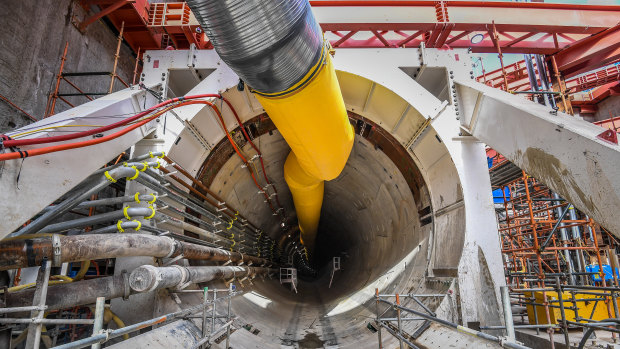
A one percentage point increase in annual migrant numbers boosts the employment levels of locally born Australians by 0.53 per cent. It did not seem to have a difference across the skill levels or age groups of the local-born.
“The arrival of migrants boosts native geographical mobility, resulting in higher regional
employment of natives,” it found.
“The positive effect of migration on native employment is mainly driven by a substantial inflow of natives who were previously employed or unemployed in other regions.”
One of the most contested issues around immigration is whether it puts downward pressure on the wages of those people already in the country. In 2021, then Reserve Bank governor Philip Lowe said high migration was one of the factors for Australia’s low wages growth.
The OECD found those areas with larger migrant share tend to have wages around 1.3 per cent higher than those with an average level of migrants.
It also found that as the migrants had higher levels of productivity, that helped boost the wages of lower-income locals more than higher-educated people.

Major projects such as Melbourne’s Metro Tunnel are in part needed to deal with growing populations.Credit: Justin McManus
“This paper finds that Australian regions with larger shares of migrants tend to have higher regional
wages, which provides evidence of a positive link between migration and labour productivity,” it said.
“Moreover, lower-skilled natives benefit slightly more from migration than higher-skilled natives.”
Loading
The OECD research, however, notes that as the nation’s capital cities are more likely to attract migrants, they are better placed to enjoy the productivity and wage boost associated with newcomers.
It also found that despite their high levels of education, migrants have lower employment rates relative to the native-born population. It said this “untapped potential” was largely due to female migrants.
“The gap mainly arises from a low labour market participation of migrant women,” it found.
The OECD research did not examine the impact of immigration on the nation’s housing market or its infrastructure needs.
Research released on Sunday by the right-leaning Institute of Public Affairs found that during 2023 Australia absorbed the largest number of net migrants on record. The number of new migrants as a proportion of the total population, at 1.67 per cent, was double the post-World War Two average.
Institute deputy executive Daniel Wild said an unprecedented migration intake was placing immense pressure on housing and infrastructure without solving the nation’s worker shortage.
“Migration has and will continue to play a critical role to our national social fabric and economy, but failure to undertake proper planning has directly driven housing shortages, household cost of living increases and has placed pressure on our education, health, and welfare systems,” he said.
The Business Briefing newsletter delivers major stories, exclusive coverage and expert opinion. Sign up to get it every weekday morning.